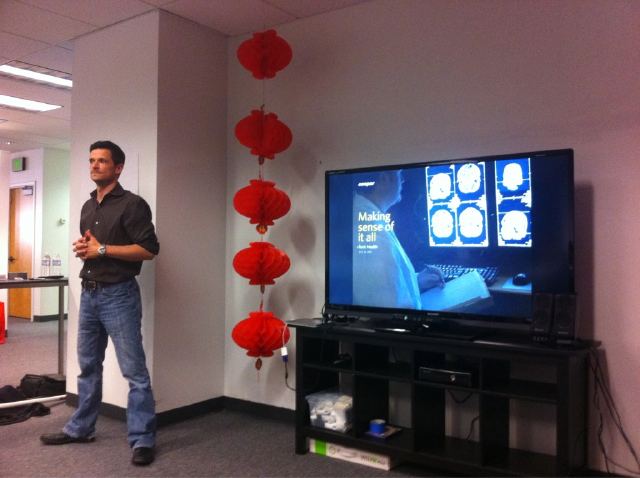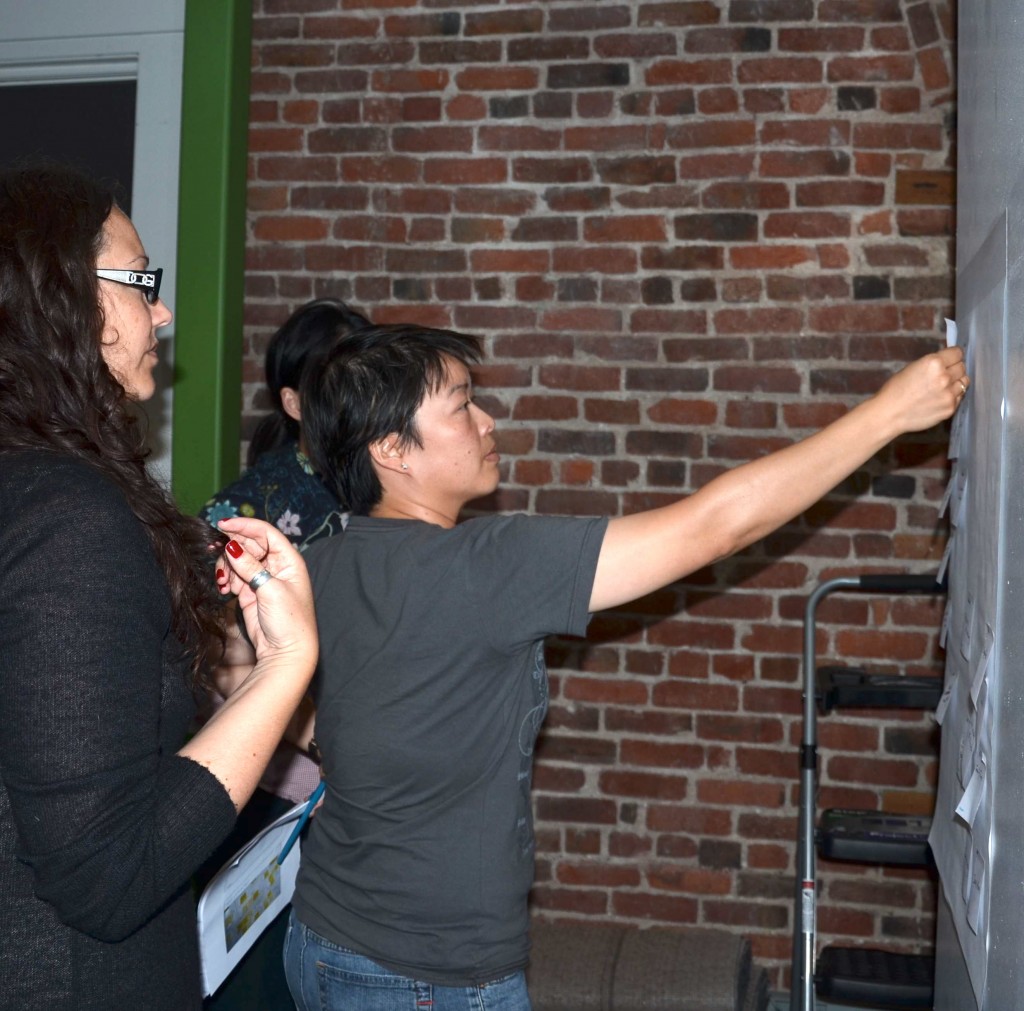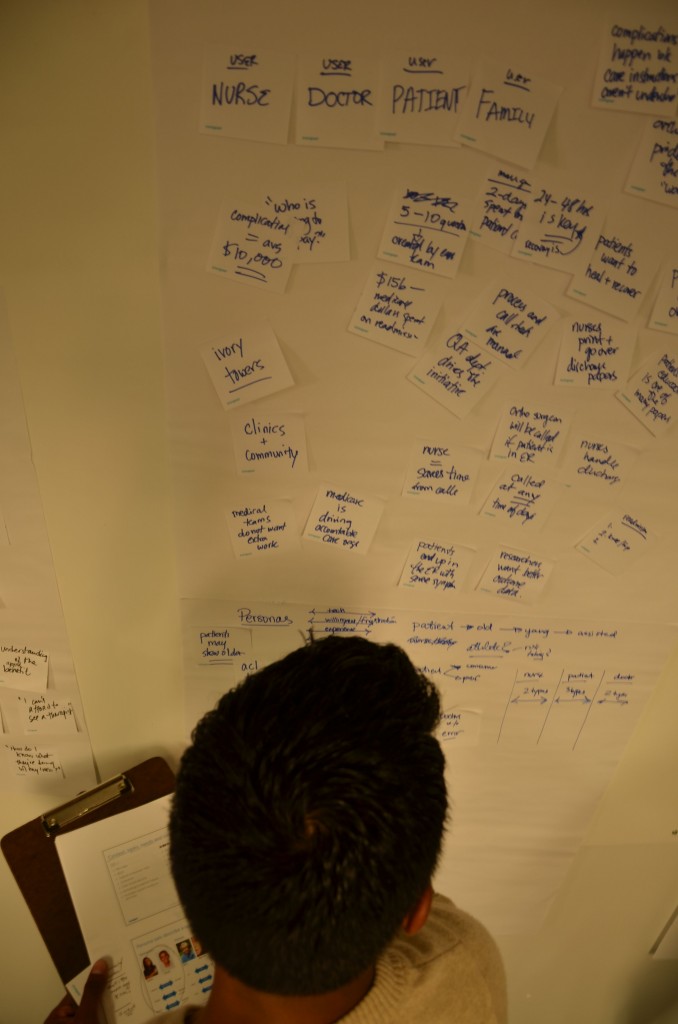Cooper Workshop: Making sense of it all
Last week’s workshop covered how to interview potential users, with the end goal of identifying their core values, needs and motivations. And diving into those deep pools of data can be daunting. This week, Cooperistas Suzie and Stefan provided the tools to stay afloat in this sea of information and decisions. So how do you do it? First, externalize the data and identify patterns, then synthesize it into easily accessible models and systems as you move forward with product development. Sounds easy enough, right? Here’s a deeper look:

Turn data into meaning
When you come back from field research, externalize what you learned. In other words, empty what is in your head and put your notes into an organized format. This process will exhibit where the holes in your research lie, clarify your assumptions and generate consensus within the group.
The Rock Health teams did this through the sticky note method, allowing for multiple team members to simultaneously purge thoughts and easily shuffle them to find trends. To begin, identify high level categories to put post-it under. We used user information categories: motivation, pain points, and needs. Write each insight down onto a sticky note and place it under the category. After all thoughts are out, look for trends of similar post-it thoughts that appear. Synthesize a cohesive headline. Here is an example from the Design my Meals team.

Post-its:
Working moms with no time
They want to spend time with kids
Need to feed family quickly
Want to feed healthy food
Headline:
Moms want to spend time with families and not planning meals
This process can be quicker than you think. It turns out, the results are typically the same if you spend weeks going through data or a couple of hours with a few strategic personas.
Creating personas
After you hone in on the important headlines, create personas that exemplify these trends. Processing, retaining and recalling information is easier when it is associated with a personality and narration. By representing headlines and conclusions with a person, it is easier to utilize.

To make a successful and useful persona, focus in on the stable characteristics and trends. Give your persona life by making it realistic and complete. Below is the process that Cooper recommends to make personas:
- Identify the big patterns: What distinct goals, needs or behaviors stand out?
- Identify key variables and ranges: Prioritize importance of variables such as ranges of experience, roles or attitudes, comfort with technology and motivations
- Group these into recognizable and useful hypotheses: create channeling target and make choices tat reflect what you know to be ture
- Establish goals for each hypothesis of a persona
- Check the whole set with professionals: Is anyone missing?
- Personify the collected information: give name, background, demographic profile, and photo
Again, this is can be easier than you think. Although you can take the resources to assemble a large packet on each persona, it is still effective to make few slides of the information on each persona.
Recommended reading and tools:
- More Better Faster: UX for startups (Cooper Journal)
- Mindo: iPad app for brainstorming (if you don’t like the post-its)
Special thanks to Suzie and Stefan for helping us make sense of it all!
Next week we’ll leran how to walk our personas through possible product scenarios.